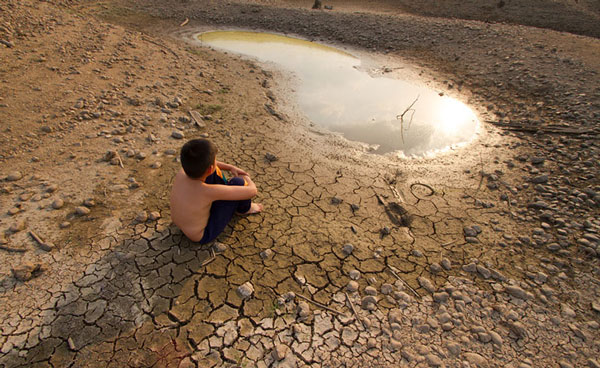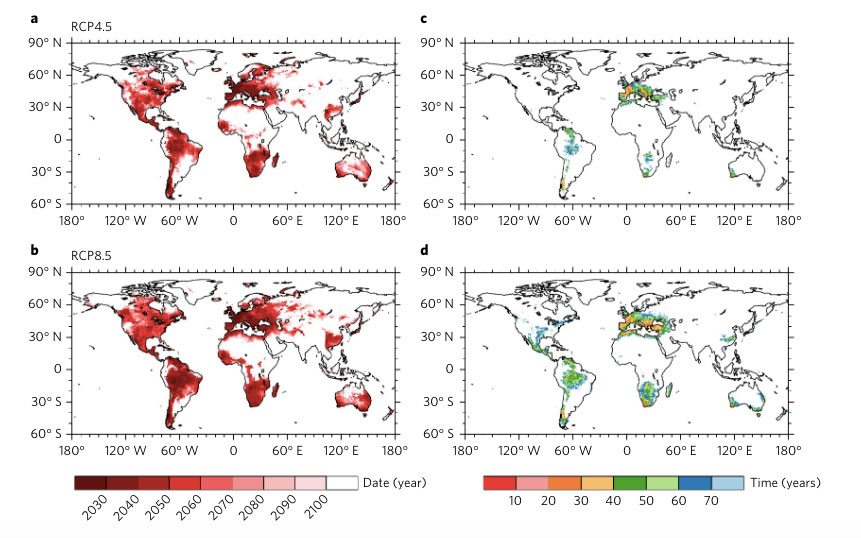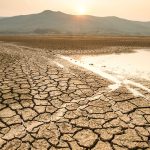Desertification is progressing all over the world, according to a study published in the journal Nature Climate Change. The consequences of global warming are already being felt and things are about to get even uglier.
More and more experts and scientists are identifying the consequences of global warming on the planet. To name a few, more accurate links are being drawn between global warming and ocean acidification, the weather which is becoming more unpredictable across seasons, or the feedback loops between warming and melting permafrost.
But that’s not all: some experts believe droughts strongly affect ecosystems in a way that certain areas end up becoming deserts – which would be irreversible. Indeed, several researchers from Asian, European, and American Universities focused on Environmental Sciences have published a large study on the subject and the results are alarming.

Desertification Is Increasing Because of Global Warming
Desertification is a phenomenon that is increasingly understood by scientists. While high temperatures and droughts prevent plants from growing, arid soils aren’t as good at retaining water. Human activity (agricultural overexploitation, soil artificialisation, deforestation ) contributes to this phenomenon by destroying the environment.
It also leads to biodiversity losses locally, which further accelerates desertification – a positive (though negative) feedback loop. Desertification also causes the carbon stored in the soil and plants to be released, which in turn contributes to global warming. These vicious circles are now well-identified in the scientific community and they are increasingly taking place across the globe.
But recent studies give us a more precise idea of the speed and extent of these desertification-caused changes and how they’re related to global warming. According to a study published in early January 2018, global warming is helping to accelerate desertification and between 24% and 32% of the globe’s land area could be affected by 2050. In summary: the world is already in the process of desertification and global warming is accelerating it.
Global Warming Accelerates Desertification in All Scenarios (Especially in Europe)
Thus, in a scenario of temperature increases of 1.5 degrees above pre-industrial levels in 2050, the researchers estimate that 24% of the land surface could be affected by aridity and desertification. For a 2 degree warming by 2050, this figure rises to 32%.
However, we already know today that it is almost impossible with current trends to stay under the 1.5 degrees target. And since desertification should also continue as temperatures continue to rise after 2050, this means that a significant part of the planet will soon be transformed into a desert. All this while considering an optimistic scenario!
This represents a significant problem on several levels: first, it means there will be a decline in the availability of agricultural land. Therefore, a decrease in production levels, followed by price increases that could lead to supply problems (and even hunger, in the worst-case scenario) can be expected.
Secondly, desertification is one of the root causes of migratory phenomena: when the ecosystems in which populations live are transformed into a desert, this contributes to poverty and economic distress, leading more and more people to move. It is estimated that millions of climate refugees could be displaced over this century due to these phenomena.
But contrary to what one might think, it is not necessarily in the countries of the south that the desertification will be the most intense and the most marked. According to the study, it could be Europe, and in particular, Southern Europe, that will be among the first regions to be affected in an intense way.
Researchers believe that if the current trends continue, a large part of Southern Europe (including the Mediterranean region) could undergo significant phenomena of aridification, droughts, and ultimately desertification. In summary: the drought phenomena observed this year in countries like Italy, Spain, Greece, France or Portugal could well become more frequent. Here is the map of the affected areas at 1.5 (graphs a and c) and 2 degrees (b and d):

How to Act Against Desertification?
In their study, the researchers give some clues on how to fight more effectively these phenomena. First, they insist on the need to take urgent measures to fight global warming by reducing greenhouse gas emissions. They insist that the measures currently taken are insufficient to keep temperatures below a 1.5 degrees increase, and call on governments to act.
We should therefore quickly question our economic model and our production methods. Especially since, contrary to what one might think, it is extremely complicated (if not impossible in the long term) to restore an area that has undergone desertification. Before we suffer irreversible damage, we must act!
To limit the effects of desertification, it is also essential to preserve the existing biodiversity in local ecosystems, especially the plants that help store water. It is, therefore, necessary to avoid the depletion of soils and to preserve natural spaces which are powerful protectors against aridity. One more reason to limit urban and industrial sprawl.
[Image credits to Shutterstock]

